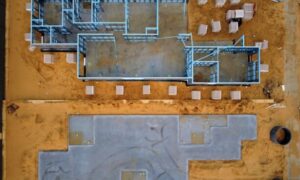Undertaking a landscaping project can be an exciting endeavor for homeowners looking to enhance their outdoor spaces’ aesthetic appeal and functionality. Whether installing new plants, creating walkways, or adding water features, working with a landscaping contractor can help turn your vision into reality. However, several important aspects must be considered before, during, and after the project. We will explore what you can expect when working with R & G Almanza Landscape Inc contractor during the landscaping process, from the initial consultation to the final touches. Understanding these steps can help you prepare for the experience and ensure the results meet your expectations.
Initial Consultation: Establishing Goals and Budget
The first step in any landscaping project is the initial consultation, where you’ll meet with the contractor to discuss your goals, vision, and budget. During this meeting, the contractor will ask questions to understand your needs, such as what style you prefer (modern, traditional, tropical, etc.), what materials you envision, and how you intend to use the space (e.g., entertainment, relaxation, or gardening). They may also inquire about how much maintenance you’re willing to do after completing the project. Be prepared to share your ideas, but remain open to suggestions, as the contractor may offer alternatives based on their experience. The contractor will also assess your property, considering its size, existing features, sunlight exposure, soil type, and other environmental factors that could influence design and plant choices. Discussing your budget during this stage is important to ensure that expectations are aligned. The contractor will work within the constraints of your budget, offering recommendations that fit both your aesthetic and financial limitations.
Design Phase: Conceptualizing the Landscape
The contractor will begin the design phase once the goals and budget are established. This is where the vision for your landscape starts to take shape. Depending on the project’s complexity, the contractor may create a detailed design plan or provide you with a basic layout. You may receive a digital or hand-drawn sketch showing proposed features, such as patios, pathways, gardens, water features, or seating areas. During this phase, the contractor will consider the flow of the space, ensuring that it meets both practical needs and aesthetic desires. They will also account for how each element complements the others and integrates seamlessly with the existing surroundings. You may have several rounds of revisions to finalize the design, especially if the project involves intricate elements or if you want to make adjustments after seeing initial concepts. Communication is crucial here, as both you and the contractor should ensure the design reflects your vision. Depending on the project’s complexity, the design phase may take time, but it’s a crucial step in ensuring the final result meets your expectations.
Permits and Approval: Navigating Local Regulations
Before the landscaping work can begin, the contractor must ensure that the necessary permits are in place. Local zoning regulations, building codes, and other laws may require permits for certain landscaping aspects, such as fences, retaining walls, or large structures. Depending on where you live, certain projects may also need approval from homeowners’ associations. A professional contractor will be familiar with your area’s permit requirements and take the necessary steps to secure them. While this process may seem like a delay, ensuring that your project complies with local laws and avoids any legal issues is essential. The contractor may also handle all interactions with the permitting authorities, making it easier for you to focus on the design and planning process. It’s important to clarify who obtains the permits during the initial consultation to ensure everything is clear.
Preparation and Site Preparation: Getting Ready for Work
Once all the necessary approvals and permits are in place, the landscaping contractor will begin preparing the site. This step involves clearing the area of any debris, weeds, or unwanted plants that could obstruct the new design. The contractor may also need to grade the land, level the soil, or create slopes for proper drainage. If the project includes adding new features like a patio, pathway, or garden beds, the area must be excavated or leveled to ensure a solid foundation. The contractor will also protect any plants or structures you want to keep. Site preparation may involve heavy equipment, such as excavators or dump trucks, to move soil or remove old landscaping materials. This phase can be messy and noisy, but it’s an essential step in ensuring that the project has a solid foundation and that your new landscape will function well for years.
Landscaping projects can transform the appearance and functionality of your outdoor spaces, offering a personalized and vibrant environment to enjoy. Working with a contractor can simplify the process, ensuring every detail is addressed and the project is completed on time and within budget. From the initial consultation to the final inspection, each phase of the landscaping process is essential in creating a space that aligns with your vision. Understanding what to expect during each stage, you can be better prepared for the journey and ensure a smooth, successful landscaping project. Whether you’re looking to redesign your garden, add hardscaping elements, or improve your property’s curb appeal, working with a contractor can help bring your outdoor space to life.



































